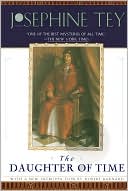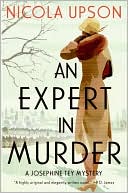Real person fiction, otherwise known as RPF, is a term used in fanfiction to describe a story that uses the actors playing the characters in a TV show or movie rather than the characters themselves. And what is fanfiction, you ask? Fanfiction is when someone writes an alternative version of something they watch, read, or play and posts it somewhere that is fanfiction friendly like fanfiction.net or livejournal.com. There are also sites dedicated to specific interests. The number of sites devoted to Harry Potter is positively legion. Fanfiction is very definitely a violation of copyright, but, since no one makes any money off of it, most writers allow it.
But RPF is a breed all its own, and a lot of sites won’t touch it. There is a very big difference between imagining any kind of behavior one cares to between fictional characters, and applying that same imagination to real people–the tabloid papers at the grocery counter notwithstanding.
However, there is a growing trend in mystery writing of using real people as amateur sleuths. An amazing number of historic figures have been pressed into service in recent years, solving a surprising variety of dastardly deeds that history did not record.
 One of my favorite books is The Daughter of Time, by Josephine Tey. It is a police procedural and a historic mystery, wrapped in a single package. In the police procedural framing story, Tey has her police detective laid up in hospital with a compound fracture. While he is unable to investigate real murders, and is bored out of his mind, he is forced by inactivity to find another occupation. Because the story was written in the 1930’s, her detective does not have the option of surfing the net, or even TV as mind candy, even if he were inclined to mind candy. A book someone brings him causes him to latch onto the idea of investigating the historic mystery of the Princes in the Tower–Edward V and his brother Richard, Duke of York, who disappeared sometime after 1483. Shakespeare’s play, Richard III, has pinned the crime of the Princes’ murder on their uncle and successor, Richard. Tey’s detective makes a different case.
One of my favorite books is The Daughter of Time, by Josephine Tey. It is a police procedural and a historic mystery, wrapped in a single package. In the police procedural framing story, Tey has her police detective laid up in hospital with a compound fracture. While he is unable to investigate real murders, and is bored out of his mind, he is forced by inactivity to find another occupation. Because the story was written in the 1930’s, her detective does not have the option of surfing the net, or even TV as mind candy, even if he were inclined to mind candy. A book someone brings him causes him to latch onto the idea of investigating the historic mystery of the Princes in the Tower–Edward V and his brother Richard, Duke of York, who disappeared sometime after 1483. Shakespeare’s play, Richard III, has pinned the crime of the Princes’ murder on their uncle and successor, Richard. Tey’s detective makes a different case.
Reading The Daughter of Time in my early teens gave me a lifelong interest in British history. The title is based on an old adage, “Truth is the daughter of time”. Whether Tey’s conclusion is the truth, no one knows. The topic is one that has been debated for over five centuries now, and Richard as the murderer has been fixed in the popular imagination. Although bodies purported to be the Princes were found in 1674 and possibly 1789, forensic testing has not been performed to date.
Imagine my surprise to discover that Tey herself had been “borrowed” as a fictional detective! Nicola Upson has begun a series of mystery novels using Josephine Tey as the center of a series of murders based in Tey’s real life as playwright Gordon Daviot. Ironically, both Tey and Daviot were pseudonyms, her real name was Elizabeth Mackintosh.
 The first novel in the series, An Expert in Murder, revolves around the end of production of the play Richard of Bordeux in 1934. The play was Tey/Daviot’s most popular work, and was the theatrical event of its time. Many of the real participants left detailed memoirs of the period and their friendship with Tey (Sir John Gielgud, for example) and Upson’s portrait of the theatrical world in the 1930’s is fascinating. One does hope that not quite so many dead bodies turned up as in this mystery.
The first novel in the series, An Expert in Murder, revolves around the end of production of the play Richard of Bordeux in 1934. The play was Tey/Daviot’s most popular work, and was the theatrical event of its time. Many of the real participants left detailed memoirs of the period and their friendship with Tey (Sir John Gielgud, for example) and Upson’s portrait of the theatrical world in the 1930’s is fascinating. One does hope that not quite so many dead bodies turned up as in this mystery.
There are two more books in this series so far, Angel with Two Faces and Two for Sorrow. I plan to read both ASAP. But as much as I’m enjoying this series, there is something very ironic in this. Tey was, by all accounts, including Upson’s own, an extremely private individual. Making Tey the leading character in a mystery series is probably something she would have shied away from or made one of the suitably biting comments for which she was apparently famous. Too bad she can’t write this play, or novel, herself.
